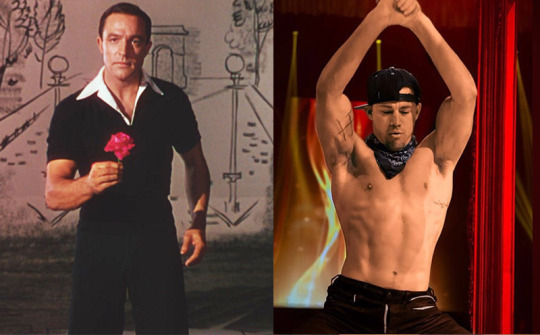Portrait of the Artist: Magic Mike XXL By K. Austin Collins
By Yasmina Tawil
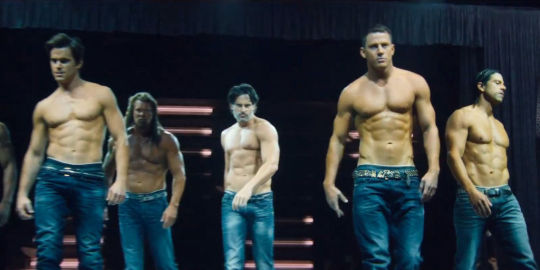
To start his day, Jerry Mulligan, the hero of Vincente Minnelli’s 1951 musical An American in Paris, does a curious thing. He’s an ex-G.I. in Paris who lives in a studio above a restaurant and café. It’s a cheap spot—small, like his income, with what little room there is being overwhelmed by clustered bouquets of old paint brushes and studious stacks of better artists’ books. Starting the day at home means, first, giving himself a little room to maneuver.
And so, in order to work, he hoists his bed up to the ceiling with a pulley, grabs a towel from the clothesline above his bed, kicks a stool aside to make way for a fold-out table, corners an overlarge den chair to replace it with one smaller. He opens the patio doors and, taking in the sun for a moment, greets the day—then he hops back to business, setting the table, picking an outfit, setting out the coffee pot. This all happens in a matter of seconds, an automatic series of kicks, spins, and slaps, nimbly matched to the cosmopolitan orchestral swing of George Gershwin’s eponymous jazz suite. Mulligan does it without thinking. And Minnelli’s amused, astonished camera gently pans to and fro, eager to capture what happens in one long and, despite the cluttered setting, spacious image.
It is a ritual: practiced, well-worn and precisely choreographed, with no pretensions to appear otherwise. But Mulligan’s body goes through these motions with refreshed spontaneity, subsuming the practical need to get ready beneath his wary joy at the prospect of a new day and the unlikely possibilities it might provide. It seems he cannot help but infuse the ritual with feeling.
Mulligan may be a failed painter, but he is nevertheless, in the film’s view, an artist, a man who naturally inflects a routine as banal as tidying up his apartment with a sense of complex expression. He’s an artist by virtue of being played and designed by one: the dance-auteur Gene Kelly, whose peculiar talent as a choreographer and performer was for fashioning the everyday into an excuse for his characters’ creative impulses to run amok. That was his genius—he could make a dance, or a prop, out of anything.
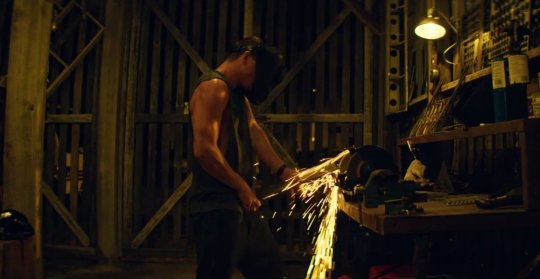
No surprise, then, that over 60 years later, a faux-musical in the guise of a stripper movie might invoke Kelly in order to depict a retired male entertainer getting his old groove back. It sounds like more of a reach than it is. Early in Gregory Jacobs’ Magic Mike XXL (2015), “Magic” Mike Lane, played by Channing Tatum, is hard at work in his furniture shop, pressing a steel T bar to a bench grinder, when Ginuwine’s “Pony” pops up on Spotify. A dutiful audience knows, from XXL’s predecessor, Magic Mike (2012), that this is Mike’s signature number from his stripper days, a virtuosic set in which, dressed in loose sweats, a snapback and a sleeveless tee to start, Mike simultaneously strips down into a thong and makes love to the floor. It’s a street performance, its every swerve and hip-pivot distinctively urban and undoubtedly black, wrenched into the confines of a small club stage by a white guy’s body, his hips stroking the ground in a steady slow-grind as if to wrestle this disconnect out of mind. His conviction—his consummate display of physical skill and what it portends for the bedroom—is what sells the act.
Mike was a uniquely gifted dancer before leaving the profession, singular in his ability to suggest, through style, that his body might be more, other, than it seemed—his muscled body, buried in a sweatsuit at the start of “Pony,” is a secret more desirable for not being immediately revealed, much like his character. But the real world works differently. His trouble, in Magic Mike, is in translating these inner multitudes into social and economic mobility, in becoming more than a stripper. XXL finds him in the process of that transition. He’s ostensibly living the life, having followed through on his dream of starting his own custom furniture shop, which is what kept him in the male entertainment business to begin with, propelling him through the personal and professional highs and lows, the steep triumphs and utter humiliations, of Magic Mike. Three years later, here he is, recently single and barely making it, with only a truck, an indistinct but livable apartment and a single employee, whose health insurance he cannot yet afford to provide, to his name.
Mike has remained an artist by trade, though not a dancer; he now specializes in making furniture out of found objects. But he has reached a point where his art has been flattened into resembling mere work. XXL begins with a resounding sense of labor, not invention. Its opening montage hops from image to image of Mike and his employee lifting and assembling and complaining about his large glass and steel abstractions, moving on before any one moment can coalesce into a scene.
And so, by the time the film lands here, in his shop, with Mike holding the steel beam as, suddenly, “Pony” comes on the radio, an entire history of character and expression has already been unloaded. When the song starts, Mike can’t help it: he laughs. Without thinking, his movements, a patterned set of loud collisions of steel into grinder, begin to invoke the song’s rhythm. Without thinking, an artistic drive that has been codified into labor is allowed, once more, to flourish as innate expression or, at the very least, a latent ability to make urbanized table-humping look good. You get the feeling that, in contrast to our impression of “Pony” when performed onstage, this song, attenuated by history, allows us to glimpse who Mike is. This is who he is, divorced from labor or forethought: a white body busting at the seams with interior blackness.
***
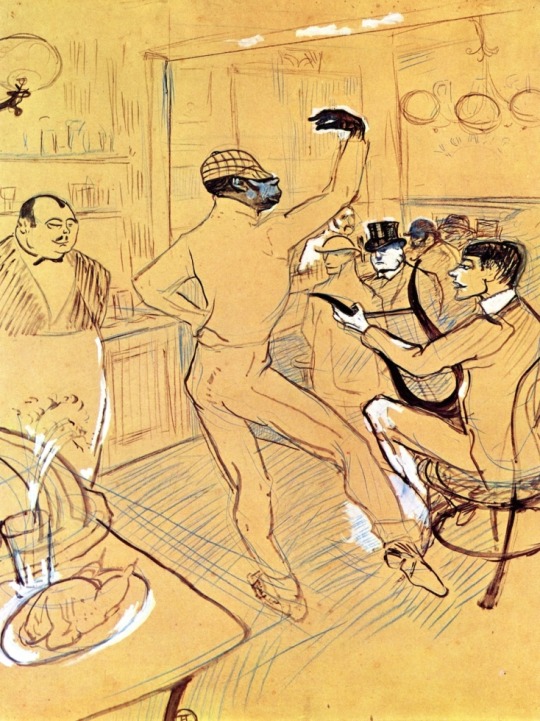
XXL opens with a vision of the man at its center navigating the line between his practical needs and his artistic impulses, his duty to routine and his spontaneous inventiveness. It’s like An American in Paris in that way. And like the Minnelli classic, which ends with Peter Mulligan’s love-fantasies being manifest as a 17-minute long urban ballet on a sound stage, XXL culminates with a series of personal fantasies made “real,” as each member of the former Kings of Tampa, Mike’s crew of fellow strippers, gets the chance to perform a brief solo act wrought in his own image. This idea—the push for personal art—propels the film forward.
The Kings of Tampa had solo acts in Magic Mike, too, but what shaped those performances was each man’s respective hunger for dollar bills—what determined the style and scope of each act were the presumed fantasies of their patrons, that is, women. This is a business in which desire is a market force, a shapeshifting collage of unpredictable but easily identified trends. “You’re not just a stripper,” explains Dallas (Matthew McConaughey) in the first film. “You are fulfilling every woman’s wildest fantasies. Alright? You are the husband that they never had.” He talks into a dance studio mirror as he says, eyes locked on a reflection of himself and his trainee, Adam “The Kid” (Alex Pettyfer), as the young dancer gradually widens the radius of his circularly swaying hips, spurred on by Dallas’s speech. “I’m talking about money,” Dallas says.
It may as well be considered the film’s thesis. Magic Mike and XXL are, taken together, a treatise on artists and commerce, one half a bit cynical, even sad, in its emphasis on the limits impressed on individuals by economic lack; the other a rapturous spectacle of artistic fulfillment that defies money’s singular ability to mitigate personal expression. When Steven Soderbergh filmed the Kings of Tampa performing in Magic Mike, the acts were as often as not reduced to montages, given a heightened, forward-moving sense of process, of accumulation—of profit. Even when he let the scenes play out, his coverage deliberately alternated between intimacy and distance, slipping back and forth between images of the men up close, often enough seen from backstage and with the audience in full view, and images of the men as they’d have appeared from the very back of the club, living sparks alit amongst so much artifice. Soderbergh allowed our sense of the performers as individuals to be overwhelmed by our impressions of the club itself, as a space: they were figments of one giant, glittering whole, cogs in a spectacle that was always looking ahead to the company’s Next Big Thing.
XXL, by contrast, emphasizes the intimacy between performer and performed-upon. Even our sense of the sizable crowd, in the final performance, is mitigated by those vast swathes of women being anonymized by darkness. We’re here to see our heroes consummate their desires. The critical consensus has been that XXL is an unabashed appreciation of adult desire, which is true, and of women’s desires in particular, which is almost false. When the mens’ acts change—from firefighters, ranch hands, and construction guys in the first film to acts reflecting some specific aspects of their own personalities—they swerve, literally, from depictions of work to depictions of pleasure, with pleasure, in this instance, being the joy of self-love and invention. XXL is not so much a film about what women want, even as the men at its center take an interest in pleasuring women, as it is an odyssey with artists at its center, a series of expressive challenges disguised as a linear journey. The challenge set before its heroes, whether in the form of making a woman smile or of making long-overdue amends with past lovers and friends, is this: express yourself. Express your self.
***
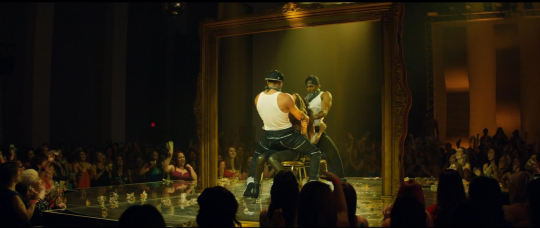
What I haven’t quite figured it out, what I’ve teased at all along, is what it means for a character like Magic Mike to express the particular self that’s manifest when “Pony” comes on the radio—a self that inescapably owes much to black culture, and black sexuality, specifically, down to style of dress, choice of music, and every sly pivot of Mike’s hips. This is no unthinking racial essentialism on my end: the entire movie seems to be in on this question, going out of its way to make Mike and the other Kings of Tampa confront the possibility that what they think of as their expressive selves, their libidinal selves, are actually borrowed—studied imitations of a form of sexual expression originating in black culture.
This explains the specific challenge posed by Rome (Jada Pinkett) to Mike, whom she calls “White Chocolate,” in her plantation-set black strip club. Mike must dance to the pleasure of black women—before that, he and the other Kings must be reduced, visually, to corners and door frames, compositionally humbled, as welcome as they are out of place. And it explains Mike’s final performance—a solo act in the guise of a duet, in which our title man takes a look in the mirror and performs against the grain of what he sees. What he sees is blackness: a black performer matched to his every gesture. It explains the part of XXL that’s either incredibly exciting or completely damning of its vision, that aspect of its worldview that’s essential to what critics, who largely ignored its pointed explorations of race amidst art and commerce, described as its utopianism.
Think, again, of this image: Mike and his black other, matched blow for blow in a mirror, bodies synchronized to imply their being the same man. A dance designed to liberate both men, presumably, to pursue their expressive selves. What are the implications of an image like this? This is a question for history. Late in the long ballet that closes An American in Paris, Gene Kelly appears in a singular yellow, tightly clothed, arms and legs pointed and precise and ready to gleefully dance and kick across the stage, which resembles a bar, with girls from the Moulin Rouge. The ballet has, to this point, used the history of French art to serve as its key aesthetic points of reference, mapping the imagery of Dufy, Renoir, Utrillo, Van Gogh, and others onto an abstracted version of the film’s libretto. In this moment, the point of reference is Toulouse-Lautrec—specifically “Chocolat dansant dans un bar”(1896). The reference is startlingly literal—a figure dancing in a bar, like that staged by Kelly, and in the same yellow outfit—but for one detail: “Chocolat.” Toulouse-Lautrec’s dancing figure, later mimicked and displaced by Kelly, is black.
There are no remnants of that black dancer in the staging and display of Kelly’s performance save for the contours of the performance itself, the brief twinges of the lindy hop, the minuscule glimpses of minstrel-esque shimmying and juke hall jazz that find their way into Kelly’s body as mechanically, as unthinkingly, as the morning routine finds its way into his avatar, Peter Mulligan. That black image is gone. XXL brings it back—restores it, confronts it, and asks us to figure out what, in light of its restoration, the rest of the film, with its ideas about art and inner life, can mean. What can XXL mean in light of history? In a film about self-discovery, what’s essential is not merely learning to look, but learning what to make of what you’ve found, when you’ve found it.
